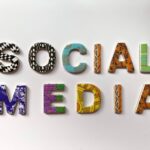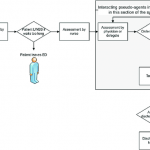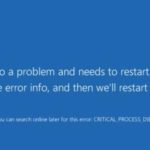4 Email Security Risks and How to Handle Them
If you were running a company with confidential and personal information being exchanged all the time, what kind of premises would you prefer: a simple hall with huge glass windows looking outside and a simple latched door, or a facility with comprehensive security and multiple layers of access?
Thinking solely in terms of security, you would probably choose the latter option, and a digital medium like email can benefit from the same treatment. If you want to turn your mailbox into a digital fortress, we recommend learning about the risks that may target it and how you can respond.
1. Interception
Emails can get intercepted for a variety of reasons, but oftentimes, there is some malicious intent. From the time you click send on a message to the moment it is opened by your recipient, there are many points where it can be captured and potentially read. For example, you might have unwittingly connected to a network set up by a hacker before sending, or the hacker has installed some malware on the email server.
If you choose to use end-to-end encrypted email, it will be very difficult for any attackers to read your messages, since an encryption key will be needed that the attackers shouldn’t have. If the encryption is end-to-end type, even the servers on the sending/receiving path will have no clue about message contents.
2. Mailing lists & leaks
It’s one thing to deal with the deluge of marketing emails you may or may not have subscribed to, but when your address is added to a spammer’s list, things get much worse. At best, you might receive dozens of nonsense spam that land right in your “Spam” folder. At worst, you may become the target of phishing attacks or even a database leak.
In the latter case, a service or website where you used an email and password is breached, and the credentials of thousands of users are stolen, often resold. While it is impossible to control the security of services where you created an account, or prevent your email address from being harvested, the least you can do is use unique passwords on different websites, so that one leak doesn’t open the door to more breaches.
3. Spoofing
With the right knowledge, you can make any email look like it was sent by the U.S. president, a celebrity, a company, or whatever. And hackers certainly take advantage of this approach, known as spoofing. To prevent spoofed messages from reaching your main inbox, you can implement DMARC and DKIM records at the DNS level and examine email headers for sender information when you want detailed information on where a message originated.
4. Weak access protection
While protecting the flow and integrity of emails is an obvious priority, users should never forget about strengthening the doors to their mail fortress – password and login factors. If you have a simple password created at a time when the mail provider kept requirements light, now is a good time to make it more complex. As an additional step making it harder for unauthorized users to sign in, you can add another layer of protection like 2FA or fingerprint authentication.
Cover Image by Freepik

















